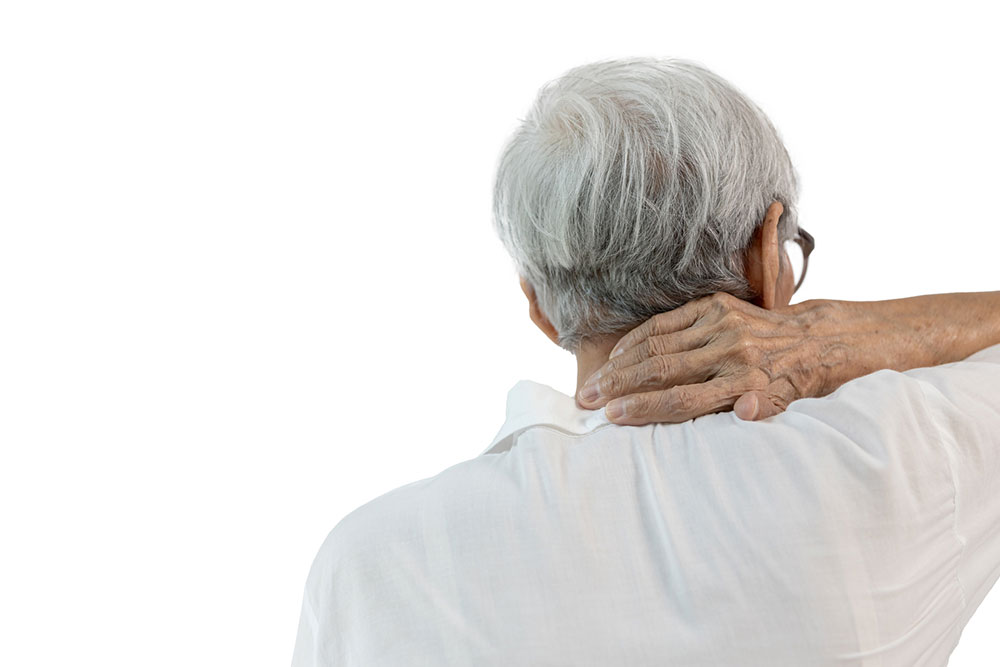6 Early Warning Signs of Spondylosis and its Management
Cervical spondylosis is an age-related degenerative health condition that affects the cervical spine or the soft disks that cushion the vertebrae and the bones in the spine. It results from the general wear and tear of the bones and cartilage in the neck and can lead to stiffness in the area. The issue is considered chronic and is common among those over 60. So, it’s important to understand its early warning signs and management options.
What causes cervical spondylosis?
Also known as cervical osteoarthritis or neck arthritis, the condition is mainly caused by age-related general wear and tear of the bones and protective cartilage.

Symptoms
While the condition is more common in older adults, those over 30 need to be careful about it since the wearing, shrinking, or drying of the discs starts much earlier than the signs show up.
1. Pain
The disks that cushion the vertebrae get compressed in this condition. So, the protective cartilage on both sides of the disc wears off due to years of use and is a normal part of aging. When they rub against each other, it leads to pain in the shoulder blades, neck, arms, lower back, and other areas. This pain usually worsens when one sneezes, stands, coughs, or tilts their head back. There may also be a feeling of something grinding each time one attempts to move their neck, which is due to lack of lubrication.
2. Neck stiffness
This is a major early sign of spondylosis. As seen earlier, the intervertebral discs lose hydration and elasticity over time, reducing the disc’s height and flexibility and making the neck more prone to stiffness. Alternatively, these degenerated discs may also bulge or inflame and irritate the surrounding tissues, leading to stiffness. The pain in the neck can also travel down to one’s arms or shoulders.
3. Unsteadiness
The condition itself is not a disability, but bone spurs may compress the nerve roots attached to the spinal cord, making a person feel clumsy, weak, or generally unsteady. One may also have an awkward gait, walking problems, or difficulty balancing. In other words, a person may lose their sense of coordination.
4. Tingling sensation
In some cases, cervical spondylosis can cause the spinal canal within the vertebrae, where the spinal cord and nerve roots travel to other parts of the body, to become narrower and pinch the nerve roots. This can cause numbness or a tingling sensation, which can be experienced mainly in the arms, hands, or legs.
5. Loss of bowel or bladder control
The compressed spinal cord causes disruptions in the nerve signals and reduces the sensations of the pelvic region. This impairs one’s sensations when one wants to defecate or empty their bladder.
6. Muscle weakness
This is another warning sign of cervical spondylosis. One may notice that it gets increasingly difficult to grasp or lift objects, and one may struggle to keep a firm hold on things.
Apart from these, one can also experience other symptoms.
- Headaches that originate in the back of the head
- A general sense of weakness in one’s arm or leg strength
One should remember that some people may not show any signs of the conditions despite having it, while others may experience excruciating pain and stiffness. Having said that, it is possible to manage the condition with proper care and treatment and lead a normal, undisrupted life.
Managing cervical spondylosis
It’s important to be aware of certain treatments for cervical spondylosis, which can help relieve the pain, extend the life and health of the discs, and avoid permanently damaging the spine.
- Physical therapy: In this scenario, a healthcare professional assists individuals in stretching their neck and shoulder muscles to improve their strength.
- Treatment options: Some doctors may recommend simple muscle relaxants to treat muscle spasms or relieve pain and stiffness.
- Ice or heat method: Another way to relieve neck stiffness is to use a hot bag, a warming pad, or an ice pack.
- Collar: Collars are used as external support to cushion one’s neck. This is a short-term relief option and a temporary solution to extreme pain. But wearing one for a long time can weaken the neck as it does not get the necessary exercise to function optimally.
- Surgery: The last resort would be surgically removing any bone spurs or herniated discs so that there’s more space for one’s spinal cord and nerves to function. But this is a rare solution for cervical spondylosis and may only be recommended in special cases if the pain is too much, and it majorly affects one’s daily life and movements.
It’s also important to maintain a healthy lifestyle to manage spondylosis and reduce the chances of developing it. The condition can be easily managed when the symptoms are mild or nil. Exercising regularly, using a soft neck brace, and massaging are some management and prevention options.

